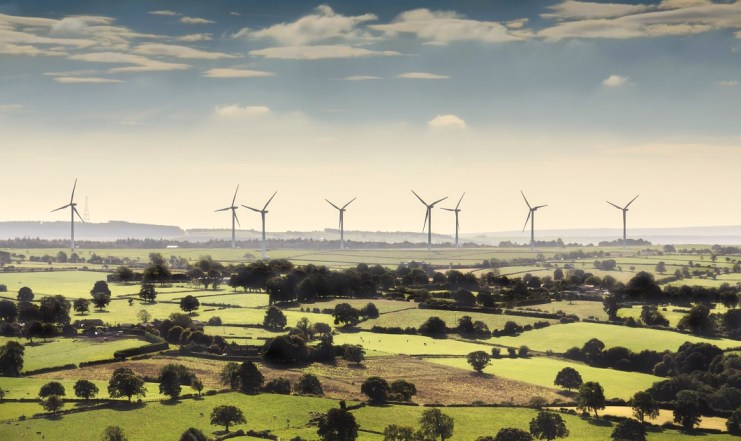Breezy does it: Government eases planning rules to boost onshore wind

Energy bosses have welcomed the Government’s decision to relax planning rules around onshore wind developments, as the UK scrambles to boost domestic energy generation.
The Government has published its “Growth Plan” for 2022″, which includes easing rules around building onshore wind farms, in line with other infrastructure projects.
Octopus Energy’s (Octopus) chief executive Greg Jackson said: “This is a huge step which will unleash the power of British onshore wind energy, reducing bills for all. Octopus Energy will act fast to bring wind farms and lower bills to areas where communities want them.
“By putting onshore wind on the same playing field as other technologies, we can turbocharge our transition to net zero, increase the UK’s energy security, and wean ourselves off expensive gas for good.”
Good Energy boss Nigel Pocklington also praised the decision, arguing that ramping up onshore wind was vital to meeting the country’s net zero goals.
Commenting on Twitter, he said: “It is the right decision to bring consenting in line with other infrastructure and should be celebrated. Too many years have been wasted by the effective block the provision of this clean and green energy source. We hope this new announcement will lead to a rapid roll-out of more wind farms in the UK, bringing energy bills down whilst driving our transition to net zero.”
More than three-quarters of the public are in favour of windfarms being built in the UK, according to an Opinium poll carried out for The Observer, following the publication of the energy security strategy in April earlier this year.
The poll even revealed 79 per cent of Tory voters were strongly or somewhat in favour of windfarms being installed in the UK, compared with 83 per cent of Labour voters and 88 per cent of Lib Dems.
Two-thirds of all voters said they would be happy for a windfarm to be built near them.
Onshore wind: Revived after years of stagnation
In recent years, onshore wind development has faced a series of planning hurdles which vastly reduced development across the UK.
Since 2015, wind farms have required consent for developments to go ahead – with sites needing to be approved in plans established by residents with local authorities across England.
Developers also have to show that the proposal is located in area designated for renewable energy in a local plan.
These requirements have empowered local authorities to make decisions over what gets built in their own communities, but at the cost of onshore wind generation, which has since stagnated.
Currently, only 11 per cent of local authorities across England have designated areas for renewable developments in their plans, according to Dr Rebecca Windemer at the University of the West of England.
Her research reveals the maximum installed capacity of wind farms (in MW) granted planning permission between 2016-2021 is just 2.6 per cent of those granted permission between 2009-2014.
This is despite the UK still generating more power from onshore wind (14.2GW) than offshore wind (11.3GW).
Suppliers such as Octopus have tried to work with existing rules to boost onshore wind development – providing communities with cheaper bills if they support local turbines being built.
More than 13,000 customers have asked the energy firm to build a wind farm in their area, but Octopus has argued that red tape means it has taken seven years to build and connect a site even though, in practical terms, they can be constructed in months.
In the Growth Plan, the Government warned the planning system has also been deteriorating in recent years, with the timespan for granting permission new sites increasing 65 per cent between 2012 and 2021
NIMBYs beware: The winds of change are here
The relaxing of planning rules around onshore wind come alongside Kwasi Kwarteng’s mini-budget, which he announced today in the House of Commons.
The Chancellor revealed his intention to boost infrastructure and ease planning laws to ramp up growth across the country for rail and road projects.
He argued that the UK’s planning system is too slow and too fragmented.
This follows Business Secretary Jacob Rees-Mogg confirming that the moratorium on fracking has been lifted.
Downing Street has committed to a huge boost in domestic energy generation following Russia’s invasion of Ukraine, to reduce the country’s reliance on overseas suppliers.

Instead, its targets only include offshore wind – with the UK aiming for 50GW of generation capacity by the end of the decade.
Currently, 86GW in various stages of planning and development – according to industry group Renewable UK.
It has previously called for the Government to lift red tape concerning onshore wind development, making its case alongside Greenpeace to City A.M. earlier this month.